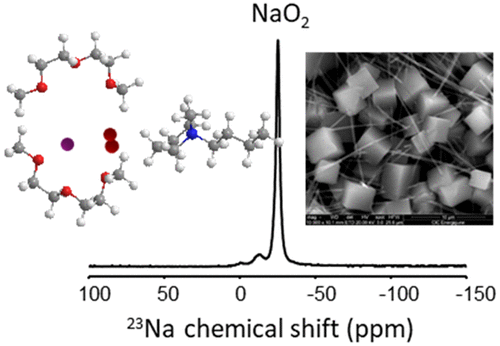当前位置:
X-MOL 学术
›
ACS Energy Lett.
›
论文详情
Our official English website, www.x-mol.net, welcomes your feedback! (Note: you will need to create a separate account there.)
Highly Homogeneous Sodium Superoxide Growth in Na–O2 Batteries Enabled by a Hybrid Electrolyte
ACS Energy Letters ( IF 22.0 ) Pub Date : 2020-02-24 , DOI: 10.1021/acsenergylett.0c00081 Nagore Ortiz-Vitoriano 1, 2 , Iciar Monterrubio 1 , Laura Garcia-Quintana 3 , Juan Miguel López del Amo 1 , Fangfang Chen 3 , Teófilo Rojo 1, 4 , Patrick C. Howlett 3 , Maria Forsyth 2, 3 , Cristina Pozo-Gonzalo 3
ACS Energy Letters ( IF 22.0 ) Pub Date : 2020-02-24 , DOI: 10.1021/acsenergylett.0c00081 Nagore Ortiz-Vitoriano 1, 2 , Iciar Monterrubio 1 , Laura Garcia-Quintana 3 , Juan Miguel López del Amo 1 , Fangfang Chen 3 , Teófilo Rojo 1, 4 , Patrick C. Howlett 3 , Maria Forsyth 2, 3 , Cristina Pozo-Gonzalo 3
Affiliation

|
Energy storage is a major challenge for modern society, with batteries being the prevalent technology of choice. Within this area, sodium oxygen (Na–O2) batteries have the capability to make a step change, thanks to their high theoretical energy density. In order to facilitate their use, the development of electrolytes is critical to overcome certain limitations that arise because of the technology’s unique chemistry, particularly relating to the stability of superoxide species. In this study, we have demonstrated the importance of selecting a suitable electrolyte to facilitate both a highly homogeneous distribution of the discharge products and to minimize the formation of undesirable reaction products. The combination of pyrrolidinium-based ionic liquid and diglyme can dramatically change the cell performance. The effect of sodium salt concentration as well as the amount of diglyme and N-butyl-N-methylpyrrolidinium bis(trifluoromethylsulfonyl)imide, [C4mpyr][TFSI], in Na–O2 batteries has also been comprehensively studied by combination of experimental and simulation techniques.
中文翻译:

混合电解质在Na–O 2电池中高度均一的过氧化钠生长
储能是现代社会面临的主要挑战,电池是首选的技术。在该区域内,钠氧(Na–O 2)电池具有较高的理论能量密度,因此具有阶跃变化的能力。为了促进其使用,电解质的开发对于克服由于该技术独特的化学作用而引起的某些限制至关重要,特别是与超氧化物种类的稳定性有关。在这项研究中,我们证明了选择合适的电解质的重要性,以促进放电产物的高度均匀分布并最大程度地减少不良反应产物的形成。吡咯烷鎓基离子液体和二甘醇二甲醚的组合可以显着改变电池性能。钠盐浓度以及二甘醇二甲醚和N-丁基-N的量的 影响Na–O 2电池中的-甲基吡咯烷鎓双(三氟甲基磺酰基)酰亚胺[C 4 mpyr] [TFSI]也已通过实验和模拟技术的结合进行了全面研究。
更新日期:2020-02-25
中文翻译:

混合电解质在Na–O 2电池中高度均一的过氧化钠生长
储能是现代社会面临的主要挑战,电池是首选的技术。在该区域内,钠氧(Na–O 2)电池具有较高的理论能量密度,因此具有阶跃变化的能力。为了促进其使用,电解质的开发对于克服由于该技术独特的化学作用而引起的某些限制至关重要,特别是与超氧化物种类的稳定性有关。在这项研究中,我们证明了选择合适的电解质的重要性,以促进放电产物的高度均匀分布并最大程度地减少不良反应产物的形成。吡咯烷鎓基离子液体和二甘醇二甲醚的组合可以显着改变电池性能。钠盐浓度以及二甘醇二甲醚和N-丁基-N的量的 影响Na–O 2电池中的-甲基吡咯烷鎓双(三氟甲基磺酰基)酰亚胺[C 4 mpyr] [TFSI]也已通过实验和模拟技术的结合进行了全面研究。


























 京公网安备 11010802027423号
京公网安备 11010802027423号